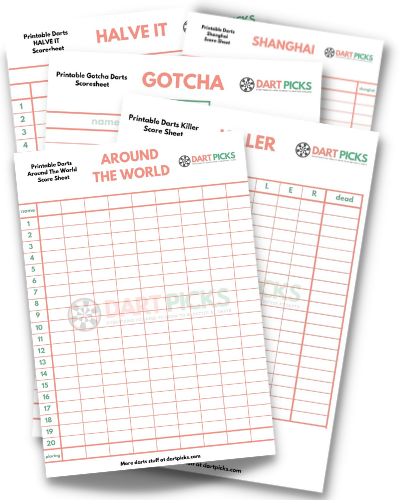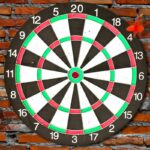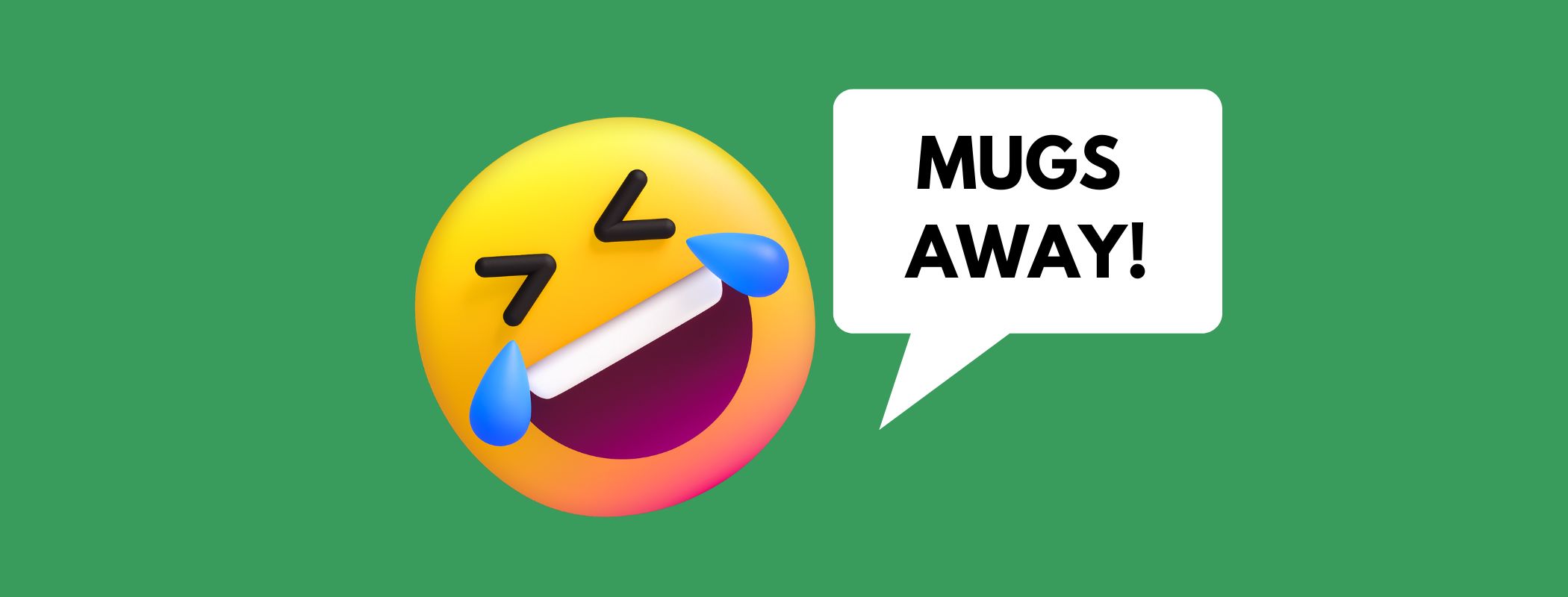Darts is famous for its obscure jargon, which will leave any new darts player scratching their heads and wondering what it all means. Consider the term “oche,” a common darts term often used in darts leagues and tournaments around the world.
If you’re new to darts and want to learn how to play, it’s important to understand the basics, including what the oche is and how to stand behind it properly. Let’s take a closer look at the oche in darts and all that it entails!
Table of Contents
What is the Oche in Darts?
The oche is the line that a player must stand behind to throw their darts. In modern darts, the oche may be referred to as the throw line or the toe line. Major tournaments, however, will refer to it as the “oche.”
The oche is an important part of darts because if the players’ toes happen to touch or cross over the line, the throw is considered null and void, causing some players to forfeit the match.
How Do You Pronounce “Oche”?
The word ‘oche’ is pronounced like the word hockey without the ‘h,‘ so you’d say it as ‘aki.’ Some people may pronounce it as “Oki” or other variations differently. However, these pronunciations are mostly regionalized and based on different accents.
Why is it Called an Oche in Darts?
It’s obvious that the term “oche” is rather obscure, so why call it “oche” instead of “throw line” or “toe line”? According to Patrick Chaplain, a popular darts expert, the term “oche” was introduced to darts by the British Darts Organization in the middle of the 1970s.
But what are the origins of the word itself? Several theories explain the origins, though none of which has been proven correct. Here are some of the most popular theories.
Hockey & Sons
According to darts folklore, the term “oche” was first used in a pub owned by brewers S. Hockey & Sons in 1908. The brewery is said to have existed in Dorset, Devon, and Cornwall and would distribute its beer in three-foot wooden crates throughout England.
Because the dart throwing distance is nine feet (more on oche measurements later), several pubs began putting three S. Hockey & Sons’ beer crates next to each other to determine the throw line. After a few months, the term “hockey” gained popularity, and players all over Europe began to use it to refer to the throw line.
In the theory’s 1981 publication, they describe it as a purely entertaining explanation of the origins of the oche in darts. Because the S. Hockey & Sons theory is so popular, most players believe it to be true. In fact, the theory became so popular that darts books and websites began to feature it as a historical darts fact.
However, according to Patrick Chaplain’s extensive research, the S. Hockey & Sons brewery never existed in England in the first place!
The ‘Spit’ Theory
It’s said that back in the day, players would stand with their backs to a dart board and spit as far as they could to mark the throwing line.
Consequently, some people claim that the oche in darts originated from the word “Hocken,” which is a Finnish word that means “to spit.” Likewise, the Flemish words “notch” or “knick,” and the old English word “hockle,” carry the same meaning.
Aunt Sally
Another theory suggests that the oche in darts originated from Aunt Sally, a skittles game popular in parts of England, particularly Gloucestershire. The term “hockey” is commonly used in the game, which some believe was mispronounced and became “oche.”
What Distance is a Dart Oche?
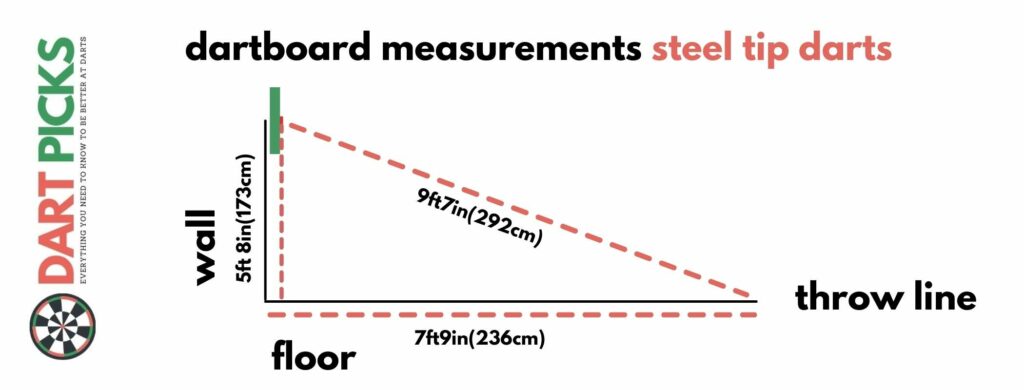
There is a standard distance in darts for measuring the oche. The steel tip dart oche is 7 feet 9/4 inches from the dartboard. On the other hand, soft tip darts are measured exactly 8 feet from the dartboard.
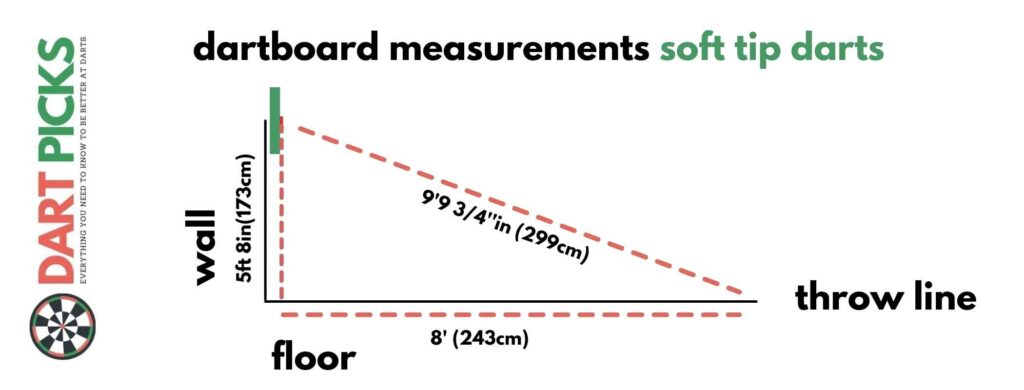
The standard rule for the oche is that it cannot be taller than 40 mm, deeper than 20 m, or wider than 500 mm. Raising the dart oche slightly higher in the specified dimensions allows players to position their feet on the oche without crossing the line.
You may also throw your darts on either side of the dart oche, as long as the invisible line extending the oche in either direction is not crossed.
Are There Other Dart Oche Rules?
Yes. In addition to the strict dart oche measurements, players must always throw darts from behind the oche. Let’s look at some more dart oche rules down below.
- While throwing your darts, you may lean over the oche. However, your feet or toes must always remain behind the oche.
- Stepping on or over the oche results in a loss of points in the overall tally. It could even lead to forfeiting the match.
- Some dart oches may have a raised oche that can help guide your standing position to avoid accidentally crossing the line.
- If you’re setting up a local darts oche, you can use tape, dart mats, or a small piece of wood to build a raised oche, making sure to follow the oche measurements outlined above.
Darts Made Simpler
The oche is an essential part of the darts game. It’s a term that has taken root over decades of darts competitions and tournaments around the world. So, whenever you hear a commentator say “oche,” or if you visit the UK and hear the term in a pub, you’ll know that it refers to the throw or tow line and happens to have no definite origin to explain why it’s called an “oche!”
Sue has been playing darts since her 20’s when she played in weekly tournaments and she enjoys writing about darts. She’s also a great teacher, and she enjoys helping others learn how to play the game well. When Sue isn’t throwing darts, she enjoys spending time with her family and friends.
The easy way to keep track of your score is with our printable darts scoresheets. Easy to download and keep on your phone or computer or print straight off from our website. Pop your email address into the box and we'll send them straight to you.




